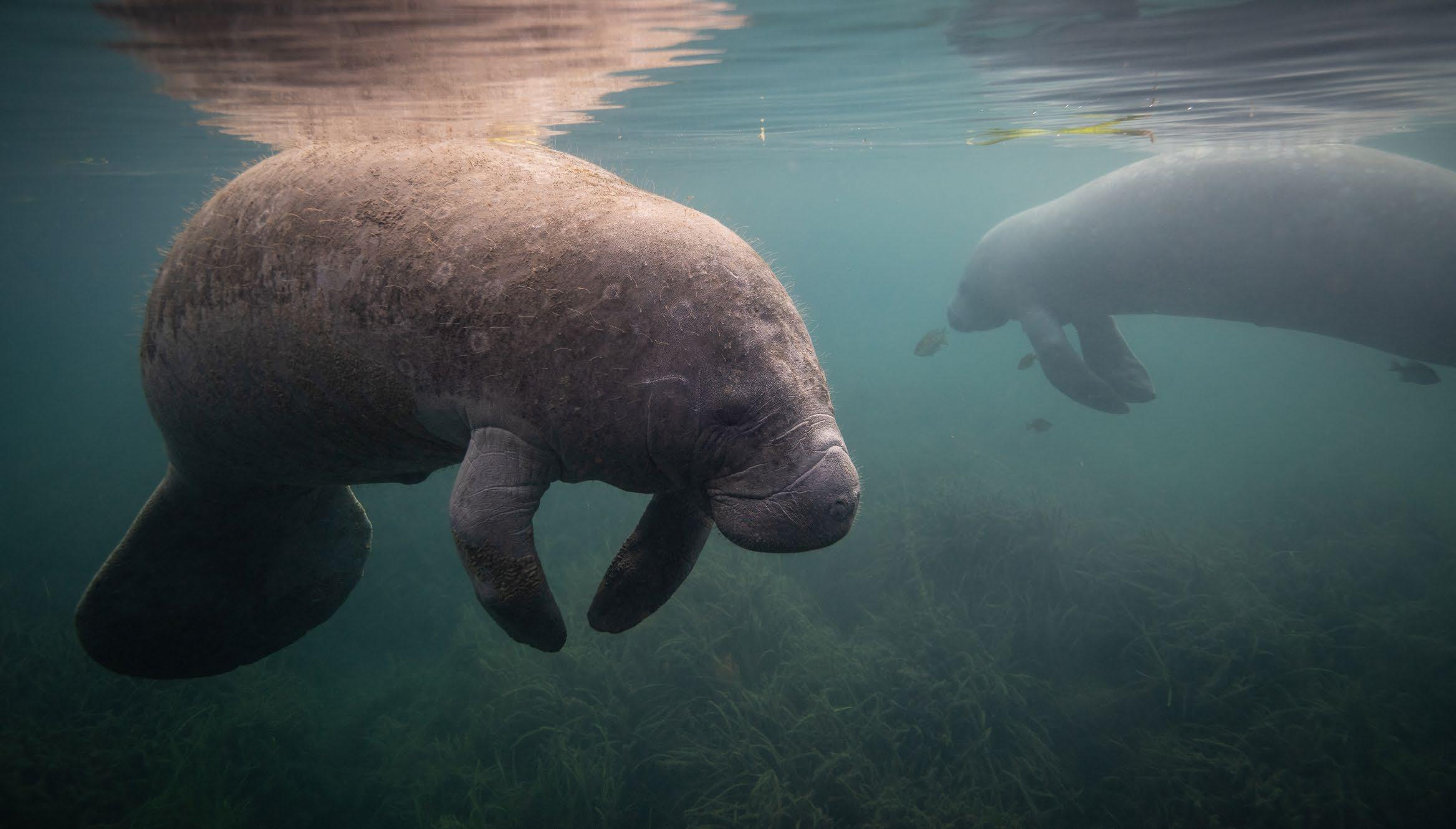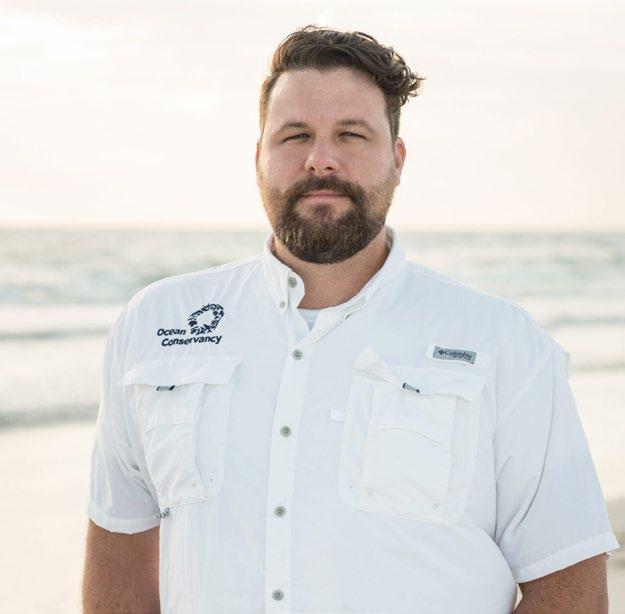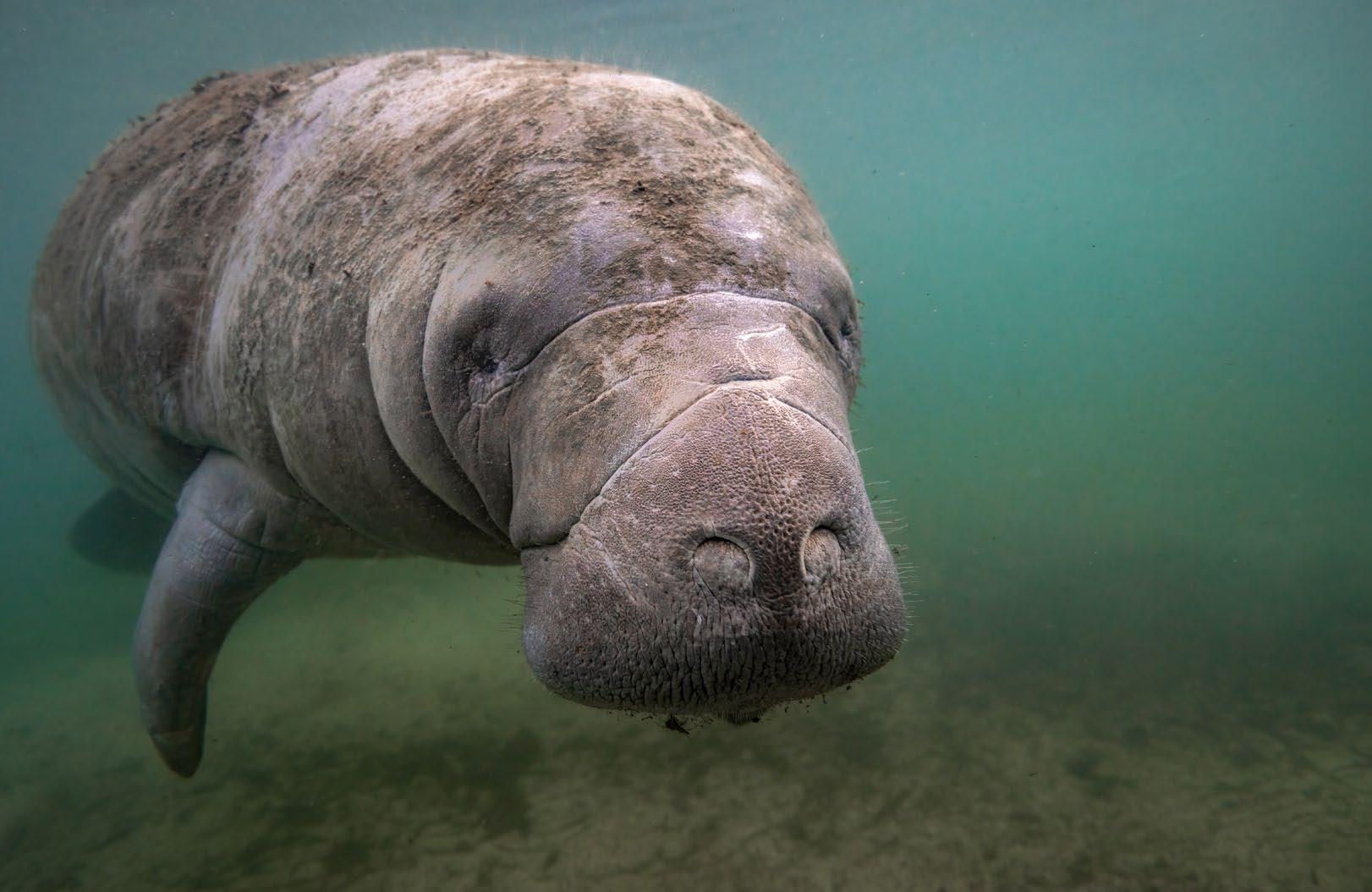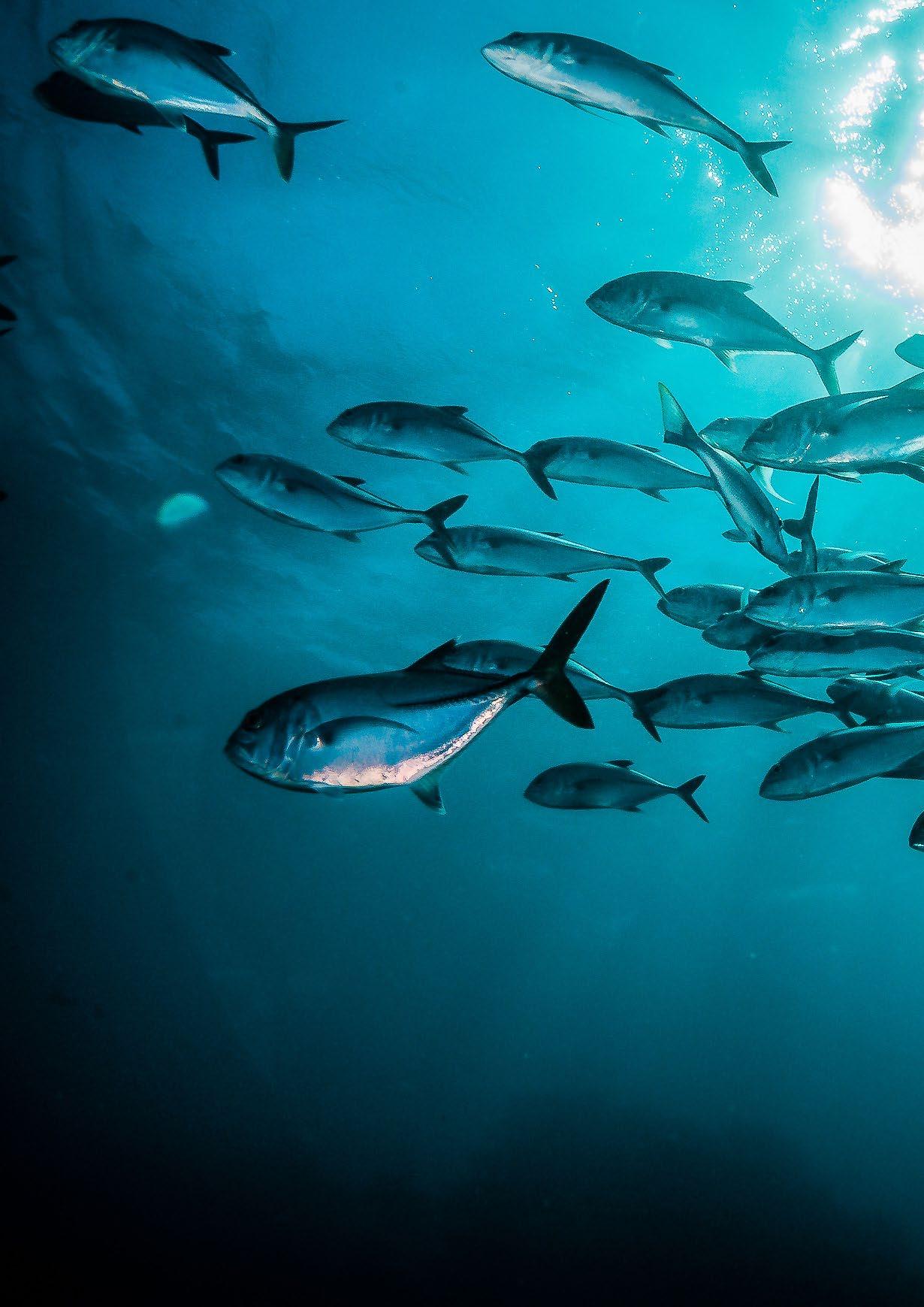
3 minute read
Saving Florida’s Manatees
Written By | MARTYN SHUTTLEWORTH
Manatees are one of Florida’s most iconic animals but, sadly, these gentle giants are under pressure from pollution, recreation, and climate change. With 25% of Florida’s manatees dying in the past two years, they need protection. In this interview, Jon Paul “J.P.” Brooker, Director of the Florida Conservation Program at Ocean Conservancy, tells us what manatees mean to a native Floridian, and suggests how we can protect them.
Advertisement
J.P. is a perfect example of someone brought up on the coast, following a way of life that he could never truly leave. Although he lived abroad for a while, coming back to protect the coasts of Florida, especially his beloved manatees, was inevitable.

“Well, I'm a sixth generation Floridian born on the Indian River Lagoon, which is a very important area for manatees. So, I grew up swimming with manatees right at the end of my street. I've known from a very young age that I wanted to participate in the conservation of Florida water. Florida is such a magical state when it comes to its nature, its wilderness, its water, its ocean.”
Now, J.P. works tirelessly to protect manatees and understands their place in wider environmental issues. As he notes, “They're our poster child for a lot of the water quality issues that the South-Eastern US is facing. They're really on the frontlines of a changing climate as one of the more severely impacted species in the United States.”
Why are Manatees Threatened?
Almost everyone knows the threats to manatees, especially boat propellors that injure and even kill these giants. J.P. points out many subtle threats facing Florida’s manatee populations, including the backdrop of climate change.
“Manatees are the canary in the coal mine for a changing climate. Warming water temperatures affect harmful algal blooms and exacerbate the loss of sea grasses. We are making Florida waters inhospitable to manatees. We're fundamentally putting too much stuff in the water, whether that's debris and plastic - or nutrient pollution, which fuels harmful algal blooms that chokes out seagrass. If we're killing thousands of acres of seagrass every year, we're clearly starving those manatees.”
The plastic particles infiltrating many marine ecosystems are a threat that scientists are only just starting to understand. J.P. stresses that:
“It's also important to think about debris. Over the last several years, more than 30% of the manatees necropsied had plastic in their systems. I don't think we fully understand the impacts to manatee health, but it's safe to surmise that the impacts are not positive.”
What Can We Do?
Naturally, the next question is what actions we can take to reduce the threat to manatees, as individuals and as a society.
“Well, the US federal government is going to reclassify the manatee as endangered under the Endangered Species Act. That'll help protect critical habitats and reduce things like boat strikes, but it's not going to help the fundamental problem of water quality. Comprehensive water quality reforms are sorely needed.”

“Just today, House Bill 1397 directed $100 million to the Indian River Lagoon for improving water quality. That's a great step, but we need that scaled up to all of the state’s watersheds with the fundamental goal of reducing nutrient inputs, specifically nitrogen and phosphorus. Those two nutrients fuel harmful algal events.”
What it means to be Floridian
When pointing what actions can make a difference, J.P. cites a growing population and tourism, noting “We have 1,000 people moving to the state every day. Where are they getting water? Where does the waste go? The fundamental answer is it goes into our waterways and wreaks havoc on our wildlife.”
He stresses the need for individual responsibility and education for incomers and visitors, especially promoting the state’s iconic animals.
“In a state where around 36% of the population was born here, for people who want to visit or move to Florida, it's really important to learn how to be Floridian. A key part of that is caring about manatees and other iconic wildlife. Mangrove swamps, coral reefs, and the Everglades… these ecosystems are interwoven into our identity.”
Another important aspect is personal responsibility, where individual residents and visitors make small changes that add up to a larger impact. J.P. notes that:
“You as a homeowner or a visitor can make decisions that have impacts on water quality. How you lay out your garden or the foods you pick. All these will ultimately impact water quality in Florida, as detached as they seem.”
The Power of Optimism
Speaking to J.P., one thing that you notice is his passion and optimism, and he leaves us with a positive message:
“I'll be honest, I couldn't be in this line of work if I wasn't incredibly optimistic. All you have to do is look at Florida and see its natural beauty and the ocean. You'll feel in your heart that it's something deeply worth protecting. Growing up on the shore, looking at the ocean, that passion is really what gives me optimism, and I think people will rally together to protect these natural assets.”
Written By | DARBY BONNER










